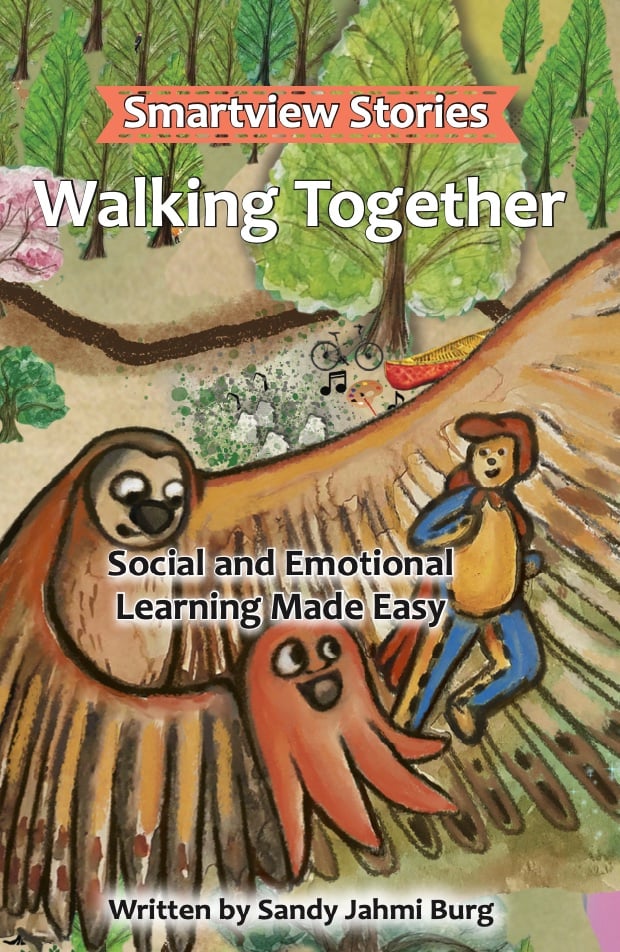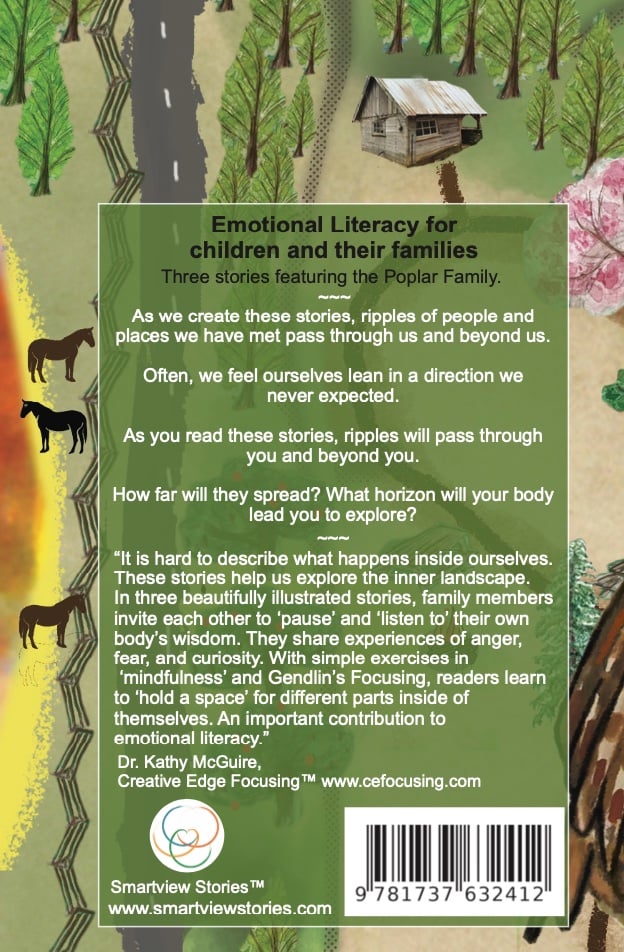Walking Together, Smartview Stories Book 2
No one teaches us how to live in a body. Smartview Stories are real-life family stories modeling skills to improve relationships with ourselves and others. Our books bring our inner world to life via three Inner Companions based on neuroscience concepts.
Wouldn't it be helpful to know the best way to use our brain?
Could it be that we are born with an internal instruction manual?
Might we have it hidden inside ourselves from birth?
Within a language that many people overlook.
These Inner Companions model HOW to use our body/brain to be our own best friend or self-mentor. Learning to BE our own best friend gives us the power to create the world within us we would like to experience around us. A world with qualities like patience, kindness, courage and authenticity.
Movement is an important aspect of how we can support ourselves in living healthy brain lives.
Walking Together features the Poplar Family. All three stories involve situations where 11-year-old Stryder or 8-year-old Wendy find someone to walk with them through new experiences. For the part of our brain that is uncomfortable with not-knowing, this sense of walking together brings relief and ease. In Quiet Like a Deer, Stryder finds himself awake at night with a strong inner knowing he’d like to explore. Wendy joins him. In New Moon Walking, Wendy convinces Mama that their feet can grow eyes and dance in the dark if they join Grammy and Grampy for their monthly New Moon Walk. Frustration builds up in Stryder as he plays games online with his friends in The Blame Game. Papa shows us how he gives Stryder space, acceptance and encouragement that he will find his own way, rather than a sense something is wrong. And, of course, they walk as they talk.
Smartview Stories are unique and go well with books by Karen Young or Dr. Dan Siegel. Our original inspiration was Winnie the Pooh. The series draws from the research of Eugene Gendlin, Iain McGilchrist, and Dan Siegel around felt sensing, brain function, perception, and Interpersonal Neurobiology.




